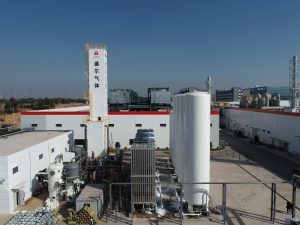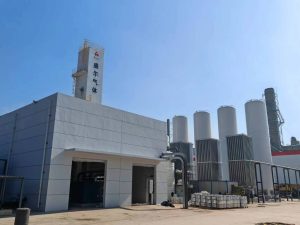We analyze why a mini cryogenic ASU surpasses PSA and membranes when ultra-high purity is mandatory.High-purity industrial gases like oxygen and nitrogen are essential in sectors from electronics manufacturing to medical applications. Traditionally, on-site gas generation for small and medium demands has been handled by non-cryogenic methods – namely Pressure Swing Adsorption (PSA) systems and membrane separation units. These technologies offer convenient and cost-effective gas supply, but they face limitations in the purity levels and volumes they can achieve.
In recent years, mini cryogenic air separation units (ASUs) have emerged as a compelling alternative when ultra-high purity or multi-gas production is required on a smaller scale. These compact cryogenic plants leverage the same proven low-temperature distillation principles as large ASUs, but in a downsized package. This article explores why mini cryogenic ASUs are increasingly replacing PSA and membrane systems in high-purity applications, comparing their performance across key factors such as gas purity, energy efficiency, scalability, operating costs, and maintenance. A detailed technical comparison and example scenarios highlight the cases where mini cryogenic ASUs are the optimal choice for on-site gas generation.
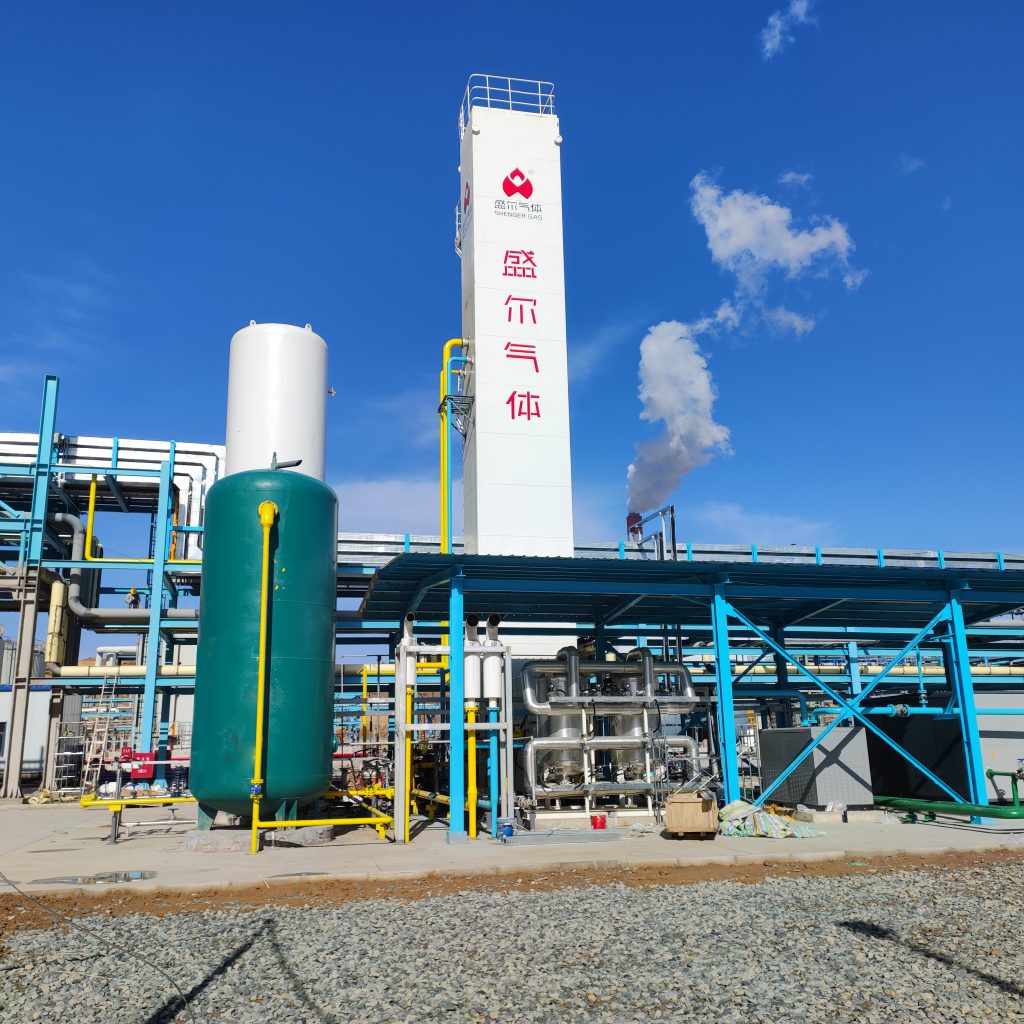
Understanding Mini Cryogenic Air Separation Units (ASUs)
Cryogenic air separation is a process that liquefies air at very low temperatures to separate it into its primary components – primarily nitrogen, oxygen, and argon. A traditional cryogenic ASU consists of an air compressor, purification system, heat exchangers, and a distillation column (cold box) where liquid air is separated into high-purity gases. Mini cryogenic ASUs are simply smaller-scale implementations of this technology. They are designed to provide the same high purities as large industrial ASUs, but for lower gas output rates suitable for localized or modest industrial needs. By cooling air to around -180°C and employing distillation, even a compact ASU can produce nitrogen with purity up to 99.999% and oxygen around 99.5% purity. Some designs also allow co-production of liquid oxygen/nitrogen or argon in small quantities for specialized needs.
Typical use cases for mini cryogenic ASUs include industries and research facilities that demand extremely pure gases but do not require the massive volumes produced by full-scale plants. For example, electronics and semiconductor manufacturing often need ultra-high purity nitrogen on-site to maintain clean inert atmospheres. Small steel or glass manufacturers might use high-purity oxygen to boost furnace temperatures and efficiency. Even large hospitals or biomedical facilities can consider mini cryogenic units if they require oxygen of higher purity than PSA systems can provide, or if they wish to generate nitrogen and oxygen simultaneously. In all these cases, a mini cryogenic ASU offers a steady, continuous supply of high-quality gas without the logistics of transporting liquid cylinders or the purity compromises of simpler technologies.
PSA and Membrane Gas Separation Systems in Perspective
To understand the shift toward cryogenic systems, it is important to review what PSA and membrane gas separators offer and where they fall short for high-purity demands. PSA (Pressure Swing Adsorption) systems separate gases using specialized adsorbent materials that preferentially capture one component of air at high pressure and release it at low pressure. A PSA oxygen generator, for instance, uses zeolite molecular sieves to adsorb nitrogen from compressed air, allowing an oxygen-enriched stream to exit (typically 90–95% O₂ purity). For nitrogen production, PSA units use carbon molecular sieve to trap oxygen, yielding nitrogen product in the 95–99.9% purity range. PSA plants are popular for on-site gas needs because they are relatively compact, modular, and quick to start (often within 15–30 minutes). They have moderate energy requirements (mainly for the air compressor) and a lower upfront cost compared to cryogenic systems.
However, PSA has intrinsic limitations: achieving purities above ~99.9% for nitrogen is difficult without multiple stages or additional “polishing” equipment, and argon cannot be recovered with PSA at all. The adsorbents can also wear out over time, requiring periodic replacement to maintain performance.
Membrane separation systems, on the other hand, use semi-permeable hollow fiber membranes that allow one gas to diffuse through faster than others. In practice, membrane generators are most commonly used for nitrogen production – compressed air is passed through membrane modules, and oxygen (along with water vapor) permeates preferentially, leaving an output stream enriched in nitrogen. Membrane units are extremely simple, with few moving parts and almost instantaneous startup. They shine in situations where moderate-purity nitrogen (typically 95–98% N₂) is needed at low to medium flow rates, such as inerting fuel tanks, blanketing food products, or supplying inert gas on ships and remote sites. Membranes operate at ambient temperature and require only a source of clean, pressurized air, giving them a small footprint and low maintenance demands.
The trade-off is that membranes have a lower maximum purity capability than either PSA or cryogenic methods – pushing beyond ~98% N₂ purity is impractical without multiple membrane stages and gas recycling, which greatly diminishes efficiency. Moreover, membrane performance is sensitive to conditions: high humidity, oil contamination, or elevated temperatures can reduce their effectiveness over time. Notably, membrane systems are generally not used for producing high-purity oxygen; at best they can provide slightly oxygen-enriched air (on the order of 30–40% O₂), which is insufficient for most oxygen-specific industrial uses.
In summary, PSA and membrane systems are excellent for small to mid-scale gas generation when purity requirements are modest to moderate. They are cost-effective, easy to operate, and quick to respond to changing demand. But when a process demands ultra-high purity or a mix of gases (like argon alongside oxygen or nitrogen), these non-cryogenic methods struggle to meet the specs. This is where mini cryogenic ASUs enter the picture, bringing the advantages of cryogenic distillation to smaller operations.
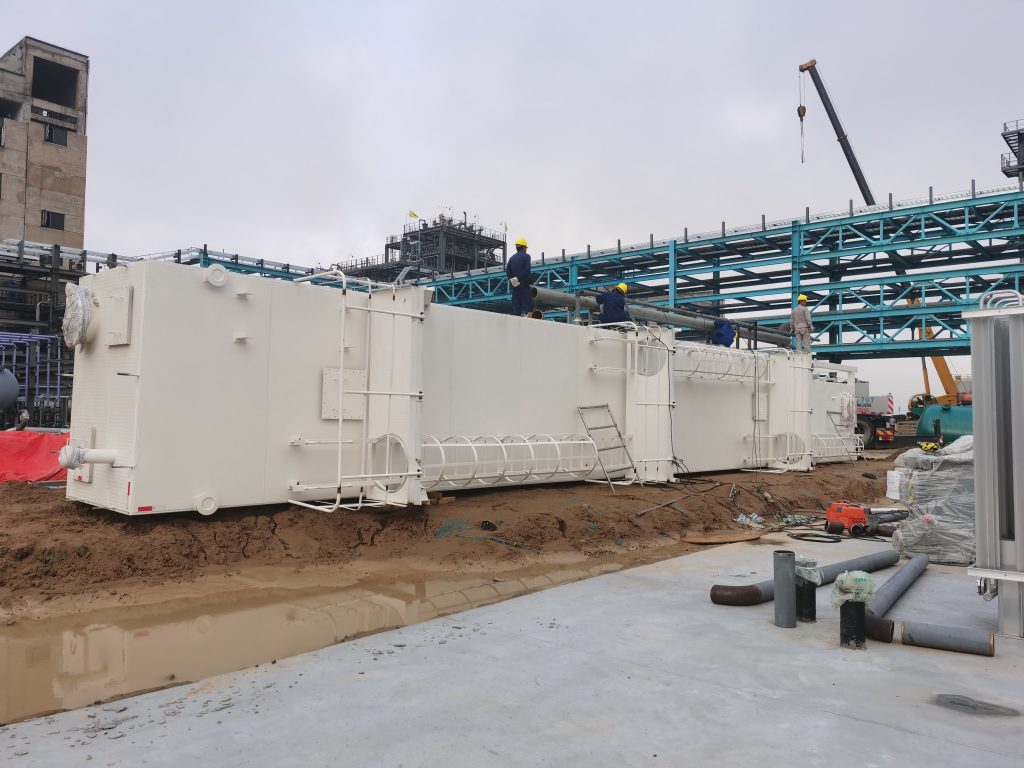
Mini Cryogenic ASUs vs PSA vs Membrane: Performance Comparison
Choosing the right gas separation technology involves balancing purity needs, volume requirements, energy costs, and operational considerations. Below is a detailed comparison of mini cryogenic ASUs with PSA and membrane systems across several key performance factors critical to high-purity applications.
Gas Purity and Product Quality
When it comes to achievable gas purity, cryogenic ASUs have a clear advantage. The cryogenic distillation process inherently produces extremely pure gases: nitrogen can be delivered at 99.999% (five nines) purity or higher, and oxygen at around 99.5% purity. Argon, a valuable inert gas, can also be captured as a pure co-product in a cryogenic unit. These purity levels are often mandatory in electronics fabrication, pharmaceutical production, and other sensitive processes. Mini cryogenic ASUs, despite their smaller size, still operate on the same principles, so they reliably supply high-purity output that meets industrial and medical specifications for ultra-pure gases.
PSA systems, by contrast, typically yield moderate purity gas. A single-stage PSA oxygen plant usually provides 90–95% O₂ (the remainder being mostly argon and nitrogen), which suffices for applications like wastewater treatment or medical oxygen USP93 but falls short of the purity needed for semiconductor manufacturing or certain metallurgical processes. For nitrogen, PSA generators can reach higher purities in the upper ninety-nine percentile range (e.g. 99.9% N₂), but sustaining 99.99% or above with PSA is challenging. It often requires larger adsorber beds, slower cycle times, or multiple adsorption stages, which increases complexity and cost. Even then, PSA cannot easily guarantee the consistently low oxygen residual (on the order of a few parts per million) that cryogenic distillation can achieve. Membrane systems are the most limited in purity: they comfortably produce nitrogen around 95–98% purity, which is adequate for inerting and fire-prevention, but they cannot attain the 99.9%+ range without severe efficiency loss. For oxygen, membrane units are not viable for high purity needs at all. Thus, for any application where gas purity is critical (ultra-high-purity nitrogen, 99%+ oxygen, or argon recovery), a cryogenic ASU is often the only practical on-site solution. Mini cryogenic plants enable smaller facilities to meet these stringent purity requirements in-house, whereas previously they might have had to rely on delivered liquid gases or compromise with lower-purity generators.
Energy Consumption and Efficiency
Energy efficiency is another vital factor when comparing these technologies. Cryogenic ASUs are known to be energy-intensive due to the refrigeration process needed to liquefy air. Even with modern optimizations, a cryogenic plant requires substantial electrical power for compressors and cooling equipment. For instance, producing 1 cubic meter of nitrogen at 99.999% purity might consume roughly 0.6–0.8 kWh of electricity in a cryogenic system. At smaller scales, mini cryogenic units tend to be somewhat less efficient per unit of gas than the mega-plants run by gas companies, because certain baseline refrigeration losses are present regardless of scale. However, their energy usage is relatively fixed per volume of gas produced, and they maintain efficiency even at very high purity levels. In other words, a cryogenic ASU’s energy cost per unit gas stays roughly constant whether the need is 99% purity or 99.999% purity output.
PSA systems generally have lower power requirements for a given volume of gas, since they operate near ambient temperature and primarily use electricity for air compression. A PSA nitrogen generator producing medium-purity N₂ (95–99%) might only consume on the order of 0.2–0.5 kWh per cubic meter of product. This makes PSA quite energy-efficient for moderate purities. However, as the desired purity approaches the upper limit of PSA capability, efficiency drops off. To get from 99% to 99.9% N₂ via PSA, the system must waste (vent) more of the processed air and possibly run at higher pressure or longer cycle times, all of which increases the energy per unit of delivered product. In extreme cases, trying to reach 99.99% by PSA can negate its usual energy advantage. Membrane nitrogen generators similarly have an energy profile mostly tied to running an air compressor. They often operate at higher inlet pressure than PSA (to drive diffusion through membranes), but they also vent a significant portion of air as oxygen-enriched waste. Up to about 95–98% N₂, membranes are quite energy-competitive, but pushing beyond 98% purity results in disproportionately large losses (most of the air ends up as waste) and therefore much higher effective energy consumption per unit of nitrogen. In summary, PSA and membrane systems are winners for energy efficiency at lower purity ranges, but they become less efficient when pushed to high purity. Cryogenic ASUs start with a higher energy draw, but for ultra-pure requirements their efficiency and throughput can actually make them more economical in the long run. Especially in high-purity applications where every cubic meter of gas must meet stringent specs, the reliability of cryogenic production can justify its energy cost.
Scalability and Capacity Range
Another key consideration is the scale and scalability of each technology. Cryogenic ASUs have traditionally been associated with large, centralized plants producing thousands of cubic meters of gas per hour – far more than a small facility would ever need. One reason PSA and membrane systems became popular is that they are easily scaled down and deployed for low to moderate gas flow rates (from just a few cubic meters per hour up to a few hundred). Now, with miniaturized cryogenic designs, the cryogenic approach can also be applied at these smaller scales. Mini cryogenic ASUs are available with production capacities starting as low as ~50 Nm³/h and ranging into several hundred Nm³/h, which overlaps with the upper end of typical PSA system capacity. While still larger in footprint than an equivalent PSA skid, these mini ASUs are compact enough to be installed on-site (often skid-mounted or containerized) and can be economically viable for mid-scale users who need high purity continuously.
PSA systems are inherently modular and highly scalable in a stepwise fashion. A single PSA unit might produce anywhere from 5 Nm³/h up to a few hundred Nm³/h, and multiple PSA units can be run in parallel to meet higher demands. They fill the gap between small cylinder-based supply and the huge cryogenic plants. For capacities up to a couple thousand Nm³/h, a PSA installation (or a cluster of them) is often cheaper and simpler than building a cryogenic plant. Membrane generators similarly can be banked together to increase output; they excel at the very low end of capacity (even below 1 Nm³/h for specialty laboratory needs) and can be combined to serve moderate demands. However, beyond a certain flow rate (several hundred Nm³/h), the number of membrane modules required becomes large and the economics usually shift in favor of PSA or cryogenic options.
In general, cryogenic ASUs become more cost-effective as scale increases, whereas PSA and membrane are targeted at small to medium scales. The crossover point depends on factors like power cost and required purity, but often if a continuous oxygen demand exceeds roughly 500–1,000 Nm³/h or a nitrogen demand exceeds ~2,000 Nm³/h, a cryogenic plant (even a mini one) will have a lower total cost of ownership. At very small scales (tens of Nm³/h), PSA or membranes still hold an edge in simplicity. What’s changing is that mini cryogenic ASUs are pushing the threshold downward – offering an option for facilities in the mid-range who previously had no choice but to use PSA/membrane and live with their limitations. These smaller ASUs still benefit from some economies of scale internally (for example, standard designs and efficient turbo-expanders developed for the small capacity range), so they present a viable alternative when purity or multi-gas capability is non-negotiable.
Operating Costs (OPEX)
Operating expenditure includes ongoing costs for power, consumables, and routine maintenance. Each technology has a different OPEX profile. Cryogenic ASUs typically have higher ongoing costs largely due to electricity usage for the air compressor and refrigeration cycle. As mentioned, they draw more power than non-cryogenic units. In addition, the complexity of a cryogenic plant means there are more instruments and components that require monitoring. On the positive side, cryogenic units can run for long periods with high reliability (often above 99% uptime annually) if properly maintained, and they do not require frequent replacement of core components – the major machinery is built for continuous operation. The main consumable in a cryogenic ASU is electricity, along with smaller items like refrigerant and adsorption materials in the front-end purifier (which may need replacement or regeneration after several years). For a facility that needs a guaranteed supply of high-purity gas, the higher utility cost of a cryogenic ASU may be acceptable when weighed against the cost of product quality issues or production downtime that could result from using lower-purity methods.In continuous operation, a mini cryogenic ASU keeps purity stable even under load changes.
PSA systems generally boast lower OPEX in terms of energy and day-to-day operation. They run at moderate pressure and do not require cryogenic cooling, so the power cost per volume of gas is lower for mid-purity outputs. Maintenance of a PSA unit is relatively straightforward: operators must maintain the air compressor (with regular oil changes or filter swaps as needed), ensure the inlet air is dry and clean (often via a pre-filter and dryer), and periodically replace the molecular sieve adsorbent (typically on the scale of several years between changes, depending on usage and air quality). Valve maintenance is another consideration, since PSA units rely on automatic switching valves cycling every few minutes; these valves and actuators can wear and may need servicing over the life of the system. Overall, PSA OPEX is quite economical, but one must note that as purity requirements approach the system’s limits, some costs increase – for example, if extra adsorber towers or additional PSA polishing stages are used to achieve higher purity, that means more material to regenerate and eventually replace. If multiple PSA units are needed for higher volume or purity, that also raises maintenance overhead accordingly.
Membrane system operating costs are usually the lowest of the three. The main expense is again electricity for the air compressor. Membrane modules do not consume power themselves and have no moving parts; thus, they don’t require much active upkeep. A key operational cost is replacement of the membrane cartridges, but this is infrequent (often every 5–10 years, depending on how gradually the membrane performance declines). Ensuring the feed air is free of oil and excessive moisture is critical – coalescing filters and dryers are used, and their filter elements need occasional changing. In terms of labor and supervision, membranes are very low-touch; they can often run unattended with minimal instrumentation. For moderate purity needs, this translates to very low OPEX. However, if one tried to operate a membrane system at the edge of its capability (maximal purity or very high flow), the losses and more frequent filter maintenance could increase costs. In summary, PSA and membrane units generally enjoy lower day-to-day costs than cryogenic ASUs, which is one reason they remain attractive for many applications. But in high-purity scenarios, those savings might be outweighed by the fact that multiple PSA/membrane units or additional purification steps would be required, effectively leveling the playing field.
Maintenance Requirements and Complexity
Maintenance and operational complexity differ significantly among cryogenic, PSA, and membrane technologies. Cryogenic ASUs are the most complex systems of the three. They involve equipment that demands careful control – for instance, the cold box must remain insulated and free of contaminants like moisture or hydrocarbons, because any ingress could freeze and cause blockages. Maintenance of a cryogenic unit is typically handled by trained technicians or engineers.
Scheduled maintenance might include overhauling compressors, checking the integrity of heat exchangers and valves, and occasionally shutting down to inspect the distillation column internals. Because a cryogenic ASU runs continuously, maintenance is often planned in annual or biannual turnarounds, or redundancy is built in so one unit can cover for another during servicing. Operating a cryogenic plant also requires attentiveness to safety protocols (managing oxygen-rich or oxygen-deficient environments, handling cryogenic liquids, etc.). In short, the maintenance burden is higher, but with proper procedures, these plants are very robust – many run for years with uptime well above 99%, as long as they are looked after by qualified personnel.
PSA systems are much simpler and more forgiving in terms of maintenance. The components in a PSA generator (apart from the air compressor) are mainly pressure vessels filled with adsorbent and an array of switching valves. Regular maintenance tasks include cleaning or replacing inlet filters, draining condensate from the compressor and air dryer, and monitoring valve cycles. The molecular sieve adsorbent will gradually degrade or get contaminated over time, especially if the inlet air isn’t perfectly clean, so a major maintenance event for PSA is replacing the sieve beds, typically every 3–5 years. This is not a very complex job but does incur downtime. Aside from that, routine inspections to ensure valves, sensors, and control systems are functioning suffice to keep a PSA running reliably. Plant operators without specialized cryogenics training can usually manage a PSA system after some basic technical instruction, making it suitable for remote or undeveloped locations where highly skilled staff might not be available.
Membrane nitrogen generators have the lowest maintenance needs of all. With no cyclical valves or moving parts inside the membrane modules, the upkeep is mostly about preserving feed air quality. Operators need to change intake filters and replace adsorbent dryer material on schedule to protect the membranes. The membranes themselves might slowly lose performance over several years (for example, the nitrogen product purity might drop slightly or throughput might decline as the membrane ages). When that happens, replacing the membrane modules is a straightforward task – not unlike swapping out a large filter cartridge. Because membranes operate continuously and can handle load swings easily, there is little operational intervention required day-to-day. The control system usually just involves regulating flow and pressure. This simplicity is a big reason membranes are favored for applications that prioritize ease of use and low supervision.
Overall, PSA and membrane systems have the edge in maintenance simplicity and lower skill requirements, whereas cryogenic ASUs demand a higher level of oversight. In high-purity applications, though, this added complexity is often acceptable or even expected, given the critical nature of the gas supply. Many companies opting for mini cryogenic ASUs will mitigate the maintenance challenge by using service contracts or remote monitoring provided by the ASU manufacturer, ensuring that the unit is properly maintained without burdening the in-house team.
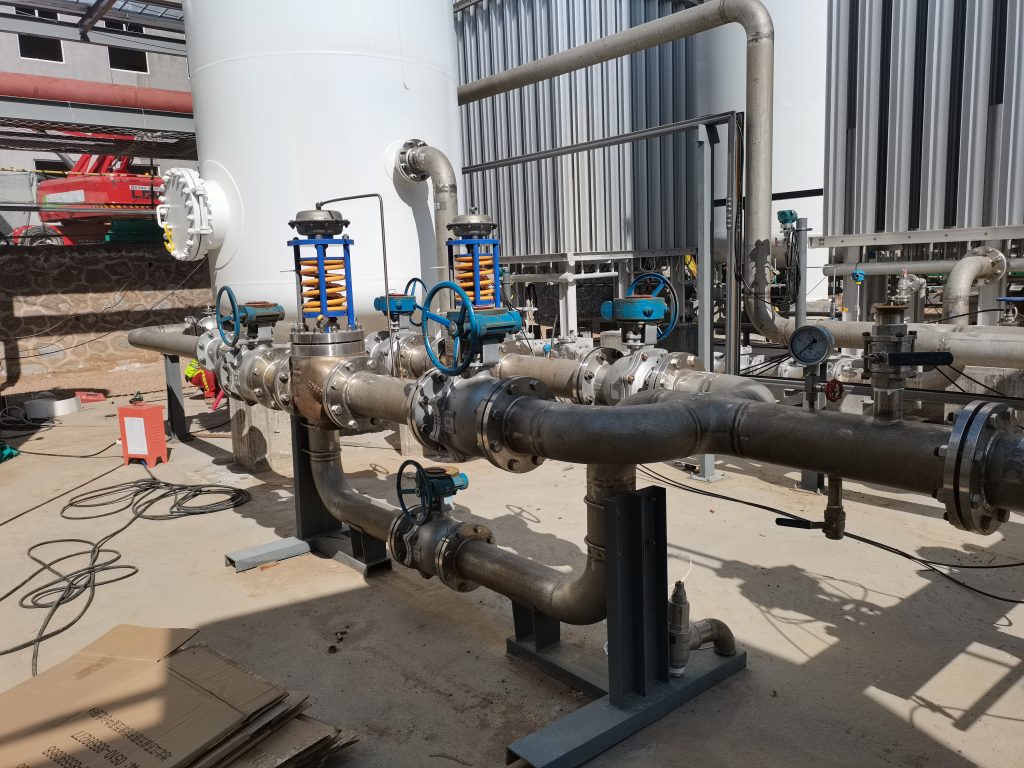
Comparison Table: Cryogenic ASU vs PSA vs Membrane Systems
Below is a side-by-side technical comparison of mini cryogenic ASUs, PSA systems, and membrane systems, highlighting their capabilities and characteristics in key areas The table below compares a mini cryogenic ASU, PSA, and membrane systems across critical KPIs.:
| Parameter | Mini Cryogenic ASU | PSA System | Membrane System |
|---|---|---|---|
| Maximum Gas Purity | Ultra-high: N₂ up to 99.999% (5.0 grade); O₂ up to ~99.5%. Argon can be produced as a pure by-product. | High (for one gas): O₂ ~90–95%; N₂ up to ~99.9% (higher possible with multi-stage PSA, but not typical). Cannot produce argon. | Moderate: N₂ ~95–98% (up to ~99% with multi-stage but inefficient). O₂ enrichment only (up to ~40% O₂, not suitable for pure O₂). |
| Production Capacity Range | Medium to large: Typically 50 Nm³/h up to several thousand Nm³/h (custom small-scale designs available for lower flows). Best suited for continuous mid-to-high demand. | Small to medium: Modular units from ~1 Nm³/h up to ~3000 Nm³/h. Multiple PSA units can be combined for higher output if needed. | Small to medium: Practical range from <1 Nm³/h up to a few hundred Nm³/h per system (can parallel modules to reach ~1000+ Nm³/h, but less common). |
| Start-Up Time & Flexibility | Slow start, steady run: Requires lengthy cool-down (several hours) to reach operating temperature. Designed for continuous operation at steady load (limited turndown flexibility). | Fast start, good flexibility: Typically 15–30 minutes to start. Can adjust to changing demand by cycling on/off or modulating flow, though rapid swings may affect efficiency. | Instant start, high flexibility: Produces gas within minutes. Easily throttles output over a wide range to match demand; ideal for intermittent or emergency use. |
| Energy Consumption | High per unit gas: Involves heavy compression and refrigeration. ~0.6–0.8 kWh per Nm³ for high-purity N₂ (steady regardless of purity needed). More efficient at larger scales than very small. | Lower at moderate purity: Primarily compressor power (e.g. ~0.3–0.5 kWh per Nm³ for ~99% N₂). Energy use rises if pushing >99.9% purity due to increased cycle time and losses. | Medium: Compressor-driven. Efficient for ≤98% N₂ purity; beyond that, diminishing returns (more gas lost as waste). Generally ~0.2–0.6 kWh per Nm³ in typical operation, increasing at higher purities. |
| Capital Investment | High: Complex equipment (cold box, turbines, etc.) and construction cost. Best justified by critical purity needs or when multiple products (O₂, N₂, Ar) are required. | Medium: Lower equipment complexity and mostly skid-mounted. Cost-effective for most small/medium installations. | Low: Simple setup with few components. Very cost-effective for small systems or moderate purity needs (cost rises if many membrane modules are needed for higher purity). |
| Operational OPEX | High OPEX: Significant electricity usage; requires continuous running for efficiency. Maintenance needs are higher (skilled staff or service contracts recommended). | Low to moderate OPEX: Lower power consumption for typical purity. Some periodic costs (adsorbent replacement, valve maintenance), but generally economical to run. | Low OPEX: Minimal power besides air compression. Very low maintenance expenses (occasional filter and membrane replacements). |
| Maintenance Complexity | Complex: Requires specialized maintenance and careful operation of cryogenics. Planned outages for inspection; high uptime when well-maintained. | Manageable: Can be maintained by general technicians. Regular checks on compressor, valves, and adsorbers. Adsorbent replacement every few years. | Simple: Little maintenance beyond keeping filters clean and replacing membrane cartridges after several years of use. |
| Ideal Use Cases | Ultra-high purity or multi-gas needs at moderate to large continuous flow. e.g. semiconductor fab (99.999% N₂), aerospace material processing, small chemical plant needing O₂ & N₂, facilities needing on-site liquid backup. | On-site gas for moderate purity and demand. e.g. food packaging (nitrogen ~99%), medical oxygen (93%), general manufacturing with steady mid-level N₂ needs, where simplicity and cost matter more than absolute purity. | Situations requiring quick, easy nitrogen supply at ≤98% purity. e.g. inerting storage tanks, fire suppression systems, mobile or remote N₂ supply, laboratories with low-volume demands and need for simplicity. |
Technical Drivers Behind the Shift to Cryogenic ASUs
Several technical factors are driving the trend toward using cryogenic ASUs, even at smaller scales, for high-purity gas applications. One major driver is the increasing demand for ultra-high purity gases in cutting-edge industries. Modern electronics, optics, and pharmaceutical processes, for instance, have very tight tolerances for contaminants in gases – levels that PSA or membrane generators cannot reliably achieve. As product quality standards become more stringent (and devices more miniaturized), many manufacturers find they simply need the purity guarantee that cryogenic technology provides.
Another driver is the advancement of cryogenic engineering and the availability of standardized “mini” ASU packages. In the past, building a cryogenic plant was a huge project involving custom design and construction of large distillation columns. Today, companies offer small-scale cryogenic plants that are largely pre-engineered and modular. These systems benefit from improved materials (for better insulation and heat exchange), more efficient small turbo-expanders, and smart control systems that optimize the refrigeration cycle. As a result, the capital and operational cost penalties for going cryogenic at lower flow rates have been reduced. In some cases, a mini ASU can be installed with a lead time of only a few months and operated with remote monitoring, making it far more accessible than older custom-built plants.
Energy economics also play a role. While cryogenic ASUs do consume a lot of power, they can become competitive on a lifecycle cost basis when local electricity is reasonably priced or if the cost of delivered bulk liquids is high. Facilities that once might have relied on trucking in liquid oxygen or nitrogen (to achieve high purity) can calculate that an on-site mini ASU will pay off over time, especially if their consumption is continuous. Additionally, where power supply is stable, the reliability of a cryogenic ASU ensures that production isn’t halted due to running out of gas – an important consideration for high-value manufacturing processes. Conversely, improvements in PSA and membrane tech (such as vacuum swing adsorption and higher-selectivity membranes) have extended their range, but they still encounter diminishing returns beyond certain purity and volume thresholds. Thus, the envelope of scenarios where cryogenic outperforms is effectively expanding.
Safety and compliance considerations are also influencing the shift. High-purity gas needs often coincide with strict safety or regulatory requirements. For example, in medical or aerospace contexts, a consistent and pure oxygen supply must be guaranteed. A cryogenic ASU, although complex, can be engineered with redundancies and backup systems (including on-site liquid storage tanks for reserve) to meet these requirements in a way that a simple PSA system might not. The ability of cryogenic units to produce liquid products is another technical plus – they can fill cryogenic storage tanks which act as buffers or backup supply during peak usage or maintenance downtime. This intrinsic resilience and flexibility is appealing to critical operations. All these factors combined – purity, technological progress, cost calculus, and reliability features – are making mini cryogenic ASUs increasingly attractive despite their higher complexity.
Scenarios Where Mini Cryogenic ASUs Are the Optimal Choice
Mini cryogenic ASUs are not the default choice for every situation, but they excel in certain scenarios. Below are some situations where deploying a mini cryogenic ASU is often the optimal solution:
- Ultra-High Purity Nitrogen for Electronics: In semiconductor fabrication, LED manufacturing, or pharmaceutical sterile packaging, nitrogen with 99.999% purity is often required to avoid even trace contaminants. A mini cryogenic ASU can supply this ultra-pure N₂ continuously on-site. PSA or membrane units cannot reliably reach the parts-per-million oxygen levels needed here, making a cryogenic system the preferred choice despite higher initial costs.
- High-Purity Oxygen for Precision Manufacturing: Processes like optical fiber production, aerospace component fabrication, or certain chemical reactors need oxygen of 99%+ purity for maximum efficiency and product quality. A PSA oxygen generator tops out around 95%, which might be insufficient. A small cryogenic ASU can deliver ~99.5% pure O₂, improving combustion performance and consistency in these applications. The higher oxygen concentration achievable through cryogenic separation leads to hotter flames and more uniform results, which is critical in high-tech manufacturing.
- Multiple Gas Requirements (O₂, N₂, Ar) on Site: If a facility requires more than one type of gas at high purity – for example, both oxygen and nitrogen for a metals processing plant, or nitrogen and argon for a specialty electronics materials plant – a mini cryogenic ASU is often the most efficient solution. It can produce all required gases within one integrated system. By contrast, meeting this need with non-cryogenic methods would involve separate PSA units for O₂ and N₂ (and still no way to obtain argon). The cryogenic ASU provides a one-stop solution and can even produce a small reserve of liquid product for backup.
- Remote or Off-Grid Operations Needing High Purity: In remote mining sites, isolated research facilities, or military bases, obtaining high-purity gases can be logistically challenging. A mini cryogenic ASU allows such sites to become self-sufficient in gas supply. For instance, an isolated facility needing high-purity nitrogen for preserving sensitive instruments will find a cryogenic plant reliable, with the only major input being electricity (which can often be supplied via local generators or renewables). PSA might be simpler, but if the purity or volume needs are at the edge of what PSA can handle, a PSA system would struggle and require frequent maintenance visits – not ideal for remote areas.
- Applications Demanding Highest Reliability: Any operation where gas supply failure or sub-par purity would cause costly downtime or safety issues is a candidate for cryogenic ASUs. Hospitals, for example, might consider a mini cryogenic oxygen plant if they are in a region with unreliable supply chains for delivered oxygen. Similarly, a continuous chemical production process that must run 24/7 can rely on a cryogenic ASU with on-site liquid storage to ensure there is always gas available at specification. The robust design and long-term stability of cryogenic systems provide peace of mind in such critical scenarios.
In each of these situations, the mini cryogenic ASU offers a combination of purity assurance, onsite control, and often a better long-term cost-benefit ratio once all factors are considered. While PSA and membrane systems remain highly useful for many conventional needs, they are outclassed in the above scenarios where their limitations would be stretched thin.

Conclusion
For high-purity nitrogen or oxygen, a mini cryogenic ASU is often the most reliable on-site choice.Mini cryogenic air separation units are carving out a significant role in the landscape of on-site gas generation, especially for high-purity applications. By scaling down the core advantages of cryogenic distillation – ultra-high purity production and multi-gas capability – these mini ASUs fill the gap between large industrial gas plants and smaller PSA or membrane systems. They allow laboratories, factories, and remote facilities to access oxygen and nitrogen at purities that were once attainable only from big ASUs or delivered liquid tanks. Although cryogenic systems come with higher complexity and upfront cost, the payoff is in the quality and reliability of the gas supply. As technology continues to improve efficiency and reduce the footprint of cryogenic equipment, more mid-sized operations are finding that the benefits in product purity, consistency, and the potential to produce multiple gases on-site outweigh the operational challenges. In a neutral evaluation of gas generation options, mini cryogenic ASUs emerge as the optimal choice whenever top-tier gas purity is a non-negotiable requirement. PSA and membrane systems will continue to serve the bulk of routine applications, but for the demanding high-purity niche, cryogenic ASUs are rapidly becoming the standard solution.

